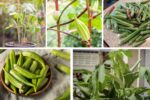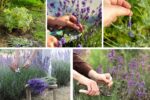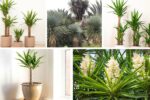When people think of garden design, colorful flowers often steal the spotlight. But seasoned gardeners know that a truly captivating landscape relies on texture just as much as color. And one of the best ways to introduce texture into your garden is through foliage plants.
From bold, broad leaves to delicate, feathery fronds, foliage plants bring depth, structure, and tactile contrast to any outdoor space. They create visual interest even when flowers aren’t in bloom, making your garden look lush and layered year-round.
Ready to elevate your landscape design? Here’s a detailed guide with 10 expert tips to add texture with foliage plants and transform your garden into a rich, multidimensional oasis.

1. Mix Leaf Sizes and Shapes
One of the simplest ways to build texture is by combining plants with different leaf sizes and shapes. Think about how a landscape feels when you pair large, tropical-style leaves with finely divided foliage — it adds instant drama and intrigue.
Ideas for contrasting leaf shapes:
- Pair bold, paddle-shaped hostas with delicate, fern-like asparagus ferns.
- Combine broad-leafed elephant ears with narrow, grassy ornamental grasses.
- Place lacy Japanese maples next to rounded hydrangea foliage.
This variety creates a harmonious balance between bold statements and soft touches.

2. Play with Color Variations in Leaves
Foliage isn’t always green — in fact, many plants offer leaves in shades of burgundy, chartreuse, blue-gray, or variegated patterns. Using these color variations adds layers of texture while enhancing your garden’s palette.
Colorful foliage to try:
- Coleus: Vibrant shades of purple, lime green, and maroon.
- Heuchera (Coral Bells): Silvery, plum, or bronze-toned leaves.
- Dusty Miller: Soft, silvery-gray foliage that brightens dark areas.
- Japanese Blood Grass: Green leaves tipped with deep red in autumn.
These color shifts catch the eye and help break up large swathes of green, making your garden feel dynamic and alive.
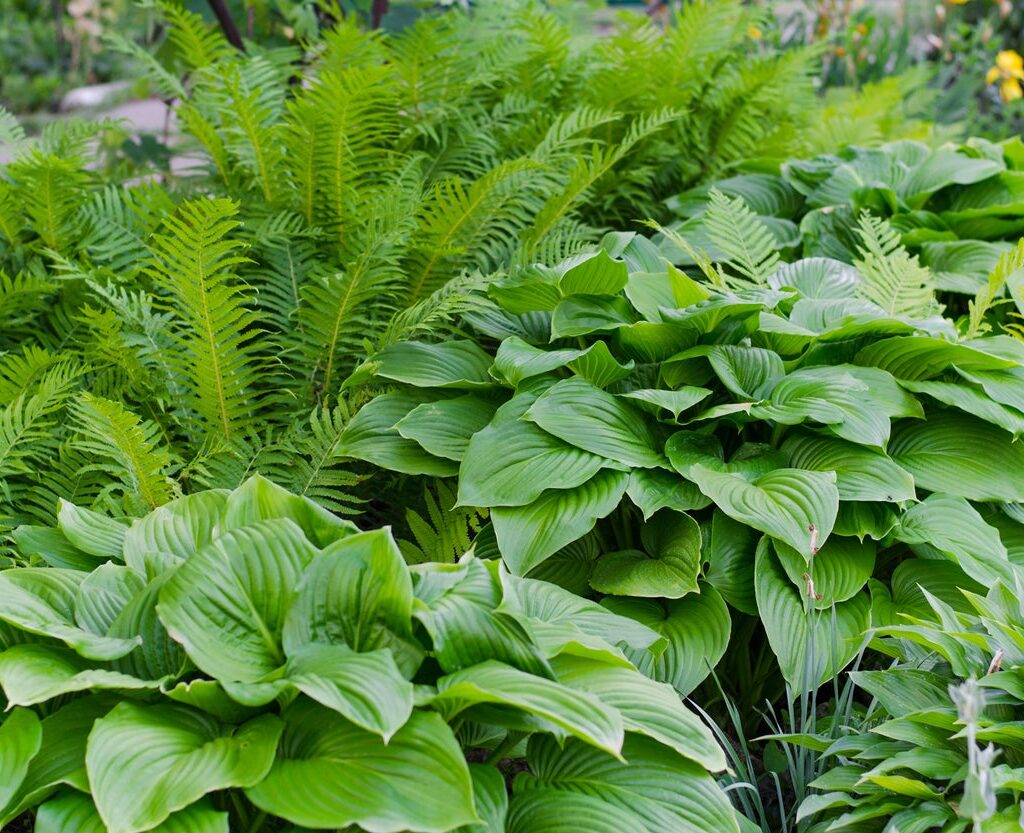
3. Layer Plants by Height and Spread
Incorporating plants of different heights and spreading habits enhances texture and visual depth. Layering tall, mid-height, and low-growing foliage plants creates natural flow and structure, much like the understory of a forest.
Example of layered planting:
- Tall: Banana plants or cannas.
- Medium: Hostas, ferns, or heucheras.
- Groundcover: Ajuga, sweet woodruff, or creeping Jenny.
This technique also works wonderfully in borders, around patios, or near pathways, offering interest at every level.

4. Combine Soft and Bold Textures
A balanced garden contains a mix of both soft, airy foliage and bold, architectural leaves. Too much of one can make the space feel either heavy or underwhelming.
Textural combinations:
- Pair the fine, feather-like leaves of maidenhair ferns with the large, corrugated leaves of rhubarb.
- Use delicate asparagus fern to soften the boldness of castor bean plants.
- Surround tall, spiky ornamental grasses with smooth, rounded leaves of bergenia.
These combinations create tension and harmony, keeping the eye engaged as it moves through the landscape.

5. Use Variegated and Patterned Leaves
Variegated plants — those with multiple colors or patterns on their leaves — are an easy way to introduce texture and visual interest. Their unique markings catch light differently and break up monotonous areas.
Great variegated options:
- Caladium: Splashes of pink, white, and green.
- Variegated hostas: Green leaves with cream or yellow margins.
- Spider plant (Chlorophytum comosum): Striped green and white arching leaves.
- Fatsia japonica ‘Spider’s Web’: Speckled white and green palmate leaves.
Use variegated plants as focal points, edging, or highlights in shady areas where flowers struggle to shine.
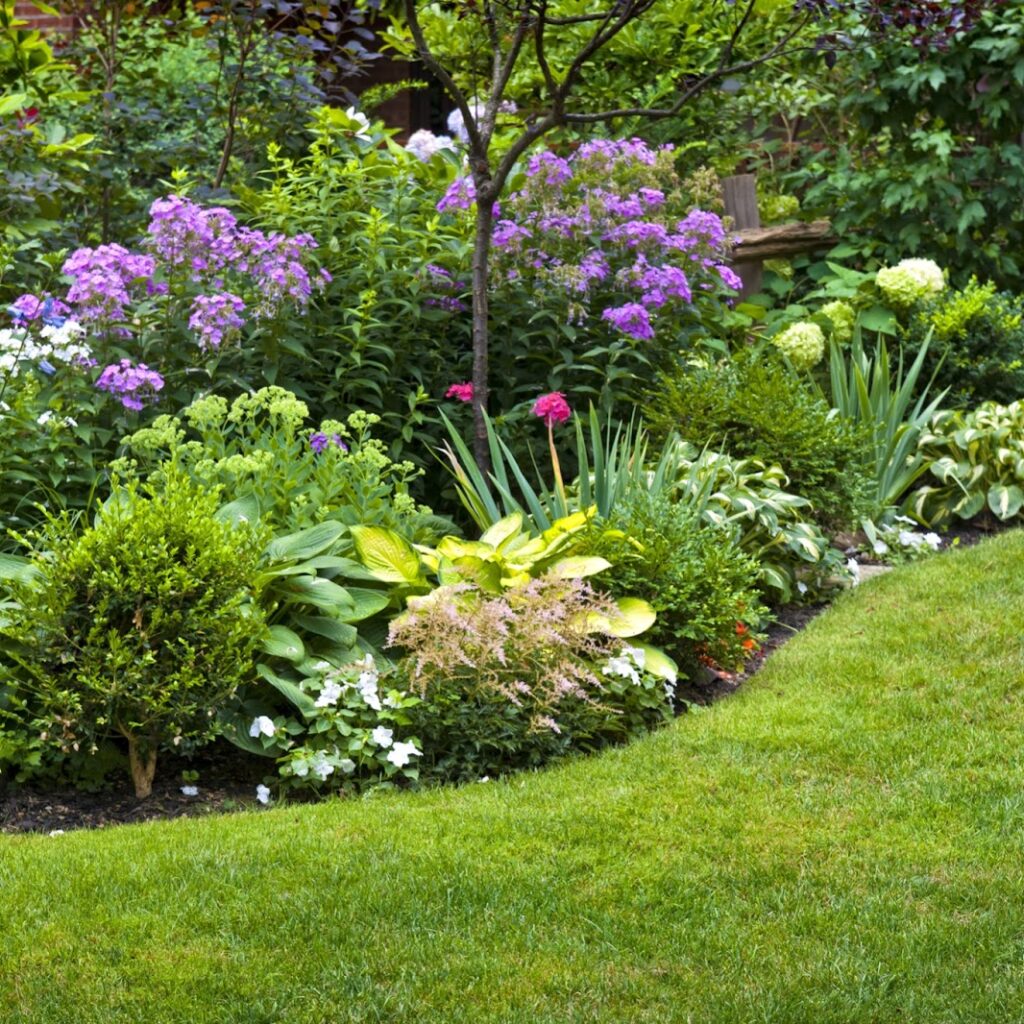
6. Create Contrast with Leaf Surface and Finish
Leaves don’t just vary in color and size — they also differ in texture. Some are smooth and glossy, others are matte or even fuzzy. Playing with these surface textures adds another dimension to your garden design.
Textural contrasts:
- The glossy, tropical leaves of peace lilies next to the velvety foliage of lamb’s ear.
- The leathery leaves of camellia paired with feathery asparagus fern.
- Silky-smooth hostas beside rough, crinkled elephant ears.
This tactile diversity enhances your garden’s sensory appeal — both visually and to the touch.
7. Incorporate Ornamental Grasses
Ornamental grasses are incredibly versatile for adding movement, height, and textural contrast. Their slender, linear blades sway beautifully in the wind, creating a sense of rhythm and softness in your space.
Popular grasses for texture:
- Pennisetum (Fountain grass): Soft, arching plumes.
- Miscanthus: Tall, upright blades with fluffy seed heads.
- Carex (Sedge): Low, arching mounds in various hues.
- Blue fescue: Compact clumps of silvery-blue blades.
Plant them in masses, as border accents, or as vertical contrast to broad-leafed plants.
8. Utilize Evergreen Foliage for Year-Round Interest
While flowers fade with the seasons, evergreen foliage plants maintain structure and texture year-round. These reliable plants anchor your garden and provide consistent color and texture through winter’s dormancy.
Excellent evergreen choices:
- Boxwood: Dense, small-leaved shrubs ideal for hedging.
- Hellebores: Glossy, leathery leaves with winter blooms.
- Japanese pieris: Cascading leaves with pink spring flowers.
- Mahonia: Holly-like leaves that turn bronze in cold weather.
Evergreens are perfect for adding texture to foundation plantings, borders, and shade gardens.
9. Plant in Drifts and Repeating Patterns
To maximize textural impact, group similar foliage plants in drifts or repeat them at intervals throughout your garden. Isolated plants can get lost, while clusters create visual rhythm and cohesion.
How to use repetition:
- Plant groups of three to five of the same texture for a bold statement.
- Repeat variegated plants along a pathway.
- Alternate fine-textured and broad-leafed plants in borders.
This technique helps guide the eye and keeps your garden from feeling chaotic or cluttered.
10. Combine Foliage Plants with Flowering Species
Though foliage plants can shine on their own, they’re even more striking when paired with flowering plants. Flowers add seasonal bursts of color, while foliage provides a consistent textural backdrop that makes blooms pop.
Beautiful pairings:
- Tall lilies rising above mounds of hostas.
- Wispy lavender against deep green boxwoods.
- Vibrant daylilies with silver dusty miller.
The combination ensures your garden looks lush and layered whether flowers are blooming or not.
Final Thoughts
Texture is one of the most underappreciated but essential elements of garden design. By incorporating a rich variety of foliage plants — from bold, broad leaves to fine, feathery fronds — you can create a garden that feels dynamic, inviting, and alive throughout every season.
Foliage plants aren’t just filler; they are the soul of a sophisticated, textured garden. Whether you’re designing a shady nook, sun-drenched border, or modern patio container, following these 10 tips will help you build a lush, layered space that delights the senses.


